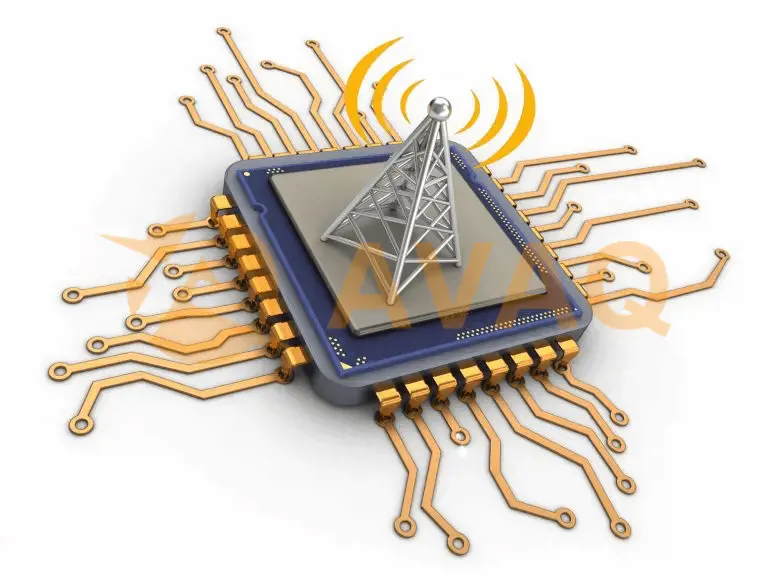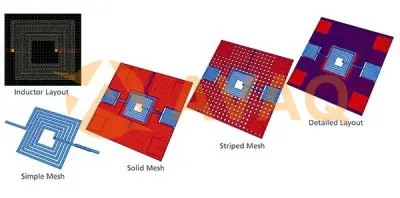What is RF IC Design 2023
 Published: May 31, 2023
Published: May 31, 2023
Contents
RF IC design, also known as radio frequency integrated circuit design, is a specialized field within the semiconductor industry that focuses on the development of integrated circuits for wireless communication systems. These circuits are designed to operate at radio frequencies, enabling the transmission and reception of signals in various applications, including mobile devices, wireless networks, satellite communication, and more.
RF IC design involves the careful consideration of factors such as frequency range, signal quality, power consumption, and interference mitigation. In this article, we will explore the fundamentals of RF IC design, the challenges involved, and the key considerations for creating high-performance RF integrated circuits.
Content
What is RF IC?
How Does RF IC Work
What is RF IC Design
What is the RF Design Process
RF IC Design Applications
What is the Difference Between RFIC and Analog IC
Conclusion
What is RF IC?
RFIC refers to radio frequency integrated circuit (Radio Frequency Integrated Circuit), which is an electronic integrated circuit that integrates radio frequency circuitry and digital circuitry. RFIC is commonly used to design and manufacture wireless communication devices and RF sensors, such as cell phones, WiFi routers, radar systems, and radio spectrum analyzers. They can operate at very high frequencies, typically in the range of a few hundred megahertz to tens of gigahertz, and can perform functions such as high-speed data transmission and high-resolution signal processing.

RF for short, RF is radio frequency current, it is a high-frequency alternating current electromagnetic wave short. The alternating current that changes less than 1000 times per second is called low-frequency current, more than 1000 times is called high-frequency current, and RF is such a high-frequency current.
How Does RF IC Work
The technical basis of RFIC mainly includes:
- 1. The research of new devices with higher operating frequency and smaller size;
- 2. Special high-frequency and high-speed circuit design technology;
- 3. Special test technology;
- 4. High-frequency packaging technology.
Radio frequency integrated circuit (RF IC) is a chip with integrated RF circuit functions. It is mainly used to process RF signals in wireless communications, including amplification of transceiver signals, modulation and demodulation, frequency conversion and other functions.
The working principle of RF IC involves the following main aspects:
💡 Amplification: The amplifier in the RF IC is used to amplify the RF signal from the transceiver input. Amplifiers are usually double balanced or differential structures to improve linearity and suppress interference. They can use various types of transistors such as MOSFETs (Metal Oxide Semiconductor Field Effect Transistors) or HBTs (Heterojunction Bipolar Transistors).
💡 Modulation and demodulation: Modulation and demodulation circuits in RF ICs are used to modulate baseband signals into the RF band or demodulate the received RF signal back into the baseband band. Modulation and demodulation circuits commonly used techniques include amplitude modulation (AM), frequency modulation (FM), phase modulation (PM), etc. These modulation and demodulation circuits can be implemented using various components such as capacitors, inductors, and transistors.
💡 Frequency conversion: Frequency conversion circuits in RF ICs are used to convert the frequency of the input signal to other frequencies to achieve FM, modulation and demodulation of the signal. Frequency conversion is mainly achieved through the mixer, which mixes the input signal with the frequency of one or more local oscillators to generate a new frequency.
💡 Filtering: Filters in RF ICs are used to select signals in specific frequency bands to filter out unwanted frequency components. Filters can be implemented using various types of capacitors, inductors, and attenuators. Common types of filters include bandpass filters, bandstop filters, and low-pass/high-pass filters.
💡 Tuning: Tuning circuits in RF ICs are used to select different operating frequencies to accommodate different communication standards and frequency bands. Tuning circuits typically use variable capacitors or variable inductors to adjust their resonant frequencies to enable frequency selection.
What is RF IC Design
RF IC design is the process of designing and developing radio frequency integrated circuits (RF ICs). It involves integrating the functions of RF circuits into a single chip to implement various RF functions in a wireless communication system.RF IC design is a complex process that requires a combination of circuit design, RF characteristics, signal integrity, power consumption, noise, and many other factors.
RF integrated circuit (RFIC) design is very similar to the niche area of analog IC design, and is typically a custom process aided by one or usually multiple EDA tools. part of the precise nature of RFIC design is that parasitic and packaging characteristics have a first-order impact on the performance of the RF circuit. As a result, RFIC design is typically an iterative process involving extensive use of EM simulation, parasitic modeling, and package modeling throughout the IC design process.
#1 System Budget Parameters
The RFIC design also gives performance requirements and constraints based on a "system budget" of key parameters, such as noise figure, power, phase noise, harmonics, linearity, etc. This budget is determined by the system-level design team. This budget is determined by the system-level design team, which passes the budget constraints and performance requirements to the RF designers responsible for each module in the system diagram.
These modules are further decomposed into topologies and circuits that are designed, simulated, and optimized using an iterative process of optimization and layout simulation using EM simulation tools that can handle ICs.
#2 IC Design Constraints
Because some on-chip passive devices, such as inductors and capacitors, are subject to strict foundry constraints, RFIC designers often have limited control over the size and value of these components. This leads to greater uncertainty in the design and may require designing and testing new components in a back and forth process with the foundry to produce the component that best meets the RF circuit's needs.
In some cases, RF designers may need to perform additional modeling of bonding lines and other foundry-independent package dynamics to accurately predict parasitic effects in the final assembly and final device performance. Many RFICs are delivered in die form with direct lead bonding to components or trays, rather than typical IC packaging and PCB placement.
#3 Electromagnetic Simulation
Once an RFIC is in the physical layout stage, multiple iterations of EM simulation, circuit simulation and parasitic extraction are typically performed that involve at least the IC package, but may also take into account the PCB and external circuitry of the device. The reason for this is that RF circuits, like highly sensitive analog circuits, are subject to dramatic performance changes due to nearby external circuits, electric/magnetic fields, temperature, electromagnetic signals, and other environmental factors.

Even after flow-through, testing, model enhancements and additional optimizations are often required before submitting the final design and starting RFIC production.
#4 RF Abstraction Levels
The following are the general abstraction levels of RFIC:
- Function
- Behavior
- Macro
- Circuits
- Transistors
- Physical Layout
What is the RF Design Process
The following describes the workflow that an engineer might follow when designing an RF integrated circuit:
⚙ Design specifications
- specifications
- constraints
- topology
- test bench development
⚙ System Design
- Advanced System Design and Budgeting
- Behavior Modeling
⚙ Circuit synthesis
- HDL Hybrid Level SIM
- Hybrid Level Partitioning
⚙ Circuit Design
- using foundry design kits
- Spiral inductor synthesis/modeling
- detailed circuit design
⚙ Circuit simulation
- time domain
- frequency domain
⚙ Physical Design
- Layout
- EM Simulation and Extraction
- Parasitic Extraction
- on-chip passive extraction
- Package Parasitic Parameter Extraction
- Design Rule Check (DRC)
- Layout and Schematic (LVS)
⚙ System Test Bench Verification
⚙ Signed net extraction/flowsheet
RF IC Design Applications
RF IC design has a wide range of applications in wireless communication and RF applications, some of the major application areas include,
1. Wireless communication systems: RF IC designs play a key role in wireless communication systems such as mobile communications, wireless local area networks (Wi-Fi), cellular networks, and satellite communications. They are used for signal amplification, modulation and demodulation, frequency conversion, and other functions in RF front ends to achieve reliable wireless signal transmission.
2. Radio frequency identification (RFID): RF IC design is widely used in RFID technology. RFID is used in the Internet of Things, supply chain management, item tracking, etc. RF IC design is used for RF communication between RFID tags and readers to achieve tag identification, reading and writing.
3. Radar systems: RF IC design plays an important role in radar systems. Radar systems are used in aerospace, military, meteorological and other applications. RF ICs are designed for signal processing, frequency generation, modulation and demodulation functions in the radar front-end to achieve target detection, tracking and measurement.
4. RF sensors: RF IC designs are used in RF sensors. RF sensors are used to measure and detect environmental parameters, such as temperature, humidity, pressure, etc. RF ICs are designed to receive and process RF signals collected by the sensors to achieve measurement and analysis of parameters.
5. Radio and satellite communications: RF ICs are designed for use in radio broadcasting, satellite communications and satellite navigation. They are used for signal reception, frequency conversion, demodulation and other functions to enable audio, video and data transmission.
In addition to the above application areas, RF IC designs are also widely used in various applications in the radio frequency band, such as radio remote control, wireless transmission, wireless sensing networks, medical devices, etc. With the continuous development of wireless communication and RF technology, the application of RF IC design in various fields is also expanding and innovating.
What is the Difference Between RFIC and Analog IC
The followings are the differences between RFIC and analog ic:
|
|
|
Analog IC |
|
Functionality |
Designed for RF signal processing |
Designed for general analog signal processing |
|
Frequency Range |
Typically operates in RF frequency range (MHz to GHz) |
Operates in a wide range of frequencies (DC to GHz) |
|
Applications |
Wireless communication, radar systems, RF sensing |
Audio/video processing, power management, sensors |
|
Key Components |
Amplifiers, mixers, filters, oscillators, modulators/demodulators |
Amplifiers, comparators, voltage regulators, DAC/ADC |
|
Design Considerations |
Signal integrity, noise, linearity, impedance matching |
Noise, linearity, power consumption, bandwidth |
|
Circuit Topologies |
Differential structures, RF-specific architectures |
General analog circuit topologies |
|
Performance Metrics |
RF specifications (e.g., gain, noise figure, linearity) |
General analog specifications (e.g., gain, bandwidth, distortion) |
Conclusion
In conclusion, RF IC design plays a vital role in the development of wireless communication systems, enabling efficient and reliable transmission and reception of signals at radio frequencies. The complexity and challenges of RF IC design require a deep understanding of electromagnetic theory, circuit design techniques, and system-level considerations.
As the demand for wireless technologies continues to grow, RF IC designers are at the forefront of developing innovative solutions that enhance connectivity, improve signal quality, and optimize power consumption. By leveraging their expertise and adopting cutting-edge design methodologies, RF IC designers contribute to the advancement of wireless communication systems, shaping the future of connectivity in various domains, including telecommunications, Internet of Things (IoT), and beyond.
 FAQ
FAQ
- What are the challenges in RF IC design?
- RF IC design poses several challenges due to the high-frequency nature of RF signals and the complex interactions among different circuit components. Some common challenges include managing noise, dealing with parasitic elements, achieving good linearity, maintaining stable and accurate frequency operation, and ensuring efficient power consumption.
- What are the key considerations in RF IC design?
- RF IC design requires special attention to factors such as noise, linearity, power consumption, and impedance matching. These considerations are crucial for achieving optimal performance in RF circuits, where high-frequency signals and small signal levels are involved.
- What are some common RF IC applications?
- RF ICs are used in a wide range of applications, including wireless communication systems such as cellular networks (2G, 3G, 4G, 5G), Wi-Fi, Bluetooth, RFID, satellite communication, radar systems, wireless sensors, and more. They are crucial for enabling wireless connectivity and efficient RF signal transmission and reception.
 Popular Industry Focus
Popular Industry Focus
Hot Products
-
![NCV33274ADR2G]()
NCV33274ADR2G
onsemi
Operational Amplifiers, Single Supply, High Slew Rate, Low Input Offset Voltage, Quad
-
![FODM2705]()
FODM2705
Onsemi
SOP-4-2.54mm Optocouplers - Phototransistor Output ROHS
-
![ATP113-TL-H]()
ATP113-TL-H
onsemi
<p>ATP113 is P-Channel Power MOSFET, -60V, -35A, 29.5mΩ, Single ATPAK for General-Purpose Switching Device Application.</p>
-
![2N4403BU]()
2N4403BU
Onsemi
0.6A Current Rating
-
![MOC3163M]()
MOC3163M
onsemi
Triac Driver Output Optocoupler, 6-Pin DIP 600V Zero Crossing
-
![NTMFS4C03NT1G]()
NTMFS4C03NT1G
onsemi
Nfet So8Fl 30V 138A 2.1Mo/Reel Rohs Compliant: Yes |Onsemi NTMFS4C03NT1G
Related Parts
-
![CV125PAG]()
CV125PAG
Integrated Circuit Systems
Phase Locked Loops - PLL FlexPC Clock Programmer P4
-
![HB11]()
HB11
Lantronix
RF Wireless Misc GPRS/EDGE cell modem M2M DIN RS232 PROG
-
![CMX869BD2]()
CMX869BD2
CML Microcircuits
Modulator / Demodulator V.32bis, V.22bis, V.22/ Bell 212A, V.23, Bell 202, V.21, DTMF Encoder/Decoder
-
![ADF9010BCPZ]()
ADF9010BCPZ
ADI
900 MHz ISM Band Analog RF Front End
-
![HMC996LP4E]()
HMC996LP4E
ADI
Analog Variable Gain Amplifier SMT, 5 - 12 GHz
-
![HMC589AST89E]()
HMC589AST89E
Analog Devices
Low-noise amplifier for RF applications
-
![TGA3042-SM]()
TGA3042-SM
QORVO
RF Amplifier 7-10.5GHz 4.5W GaN SSG 32dB
-
![STA2051]()
STA2051
ST
RF Microcontrollers - MCU 32-bit Sngl CHIP BaseBand CONTROLLER
-
![RF2374TR7]()
RF2374TR7
RFMD
RF Amplifier 50-4000MHz 3V -40C +85C
-
![HEF4046BP,652]()
HEF4046BP,652
NXP
Phase Comparator 16-Pin PDIP Bulk
-
![LM1973N]()
LM1973N
NS
Audio Volume Control 3 Channel 20-PDIP
-
![LEE-39+]()
LEE-39+
Mini-Circuits
RF Amplifier ML AMPL / SURF MT / RoHS
-
![MB15E03SLPFV1-G-ER-6E1]()
MB15E03SLPFV1-G-ER-6E1
INFINEON
Phase Locked Loops - PLL PLL Freq Synthesizer Single Serial Input
-
![AMMP-6222-BLKG]()
AMMP-6222-BLKG
Broadcom Limited
Wide Band Low Power Amplifier, 7000MHz Min, 21000MHz Max, 1 Func, 5 X 5 MM, 1.25 MM HEIGHT, 8 PIN
-
![HMC1040LP3CE]()
HMC1040LP3CE
ADI
GaAs pHEMT MMIC Low Noise Amplifier SMT, 24 - 43.5 GHz

 Update Time: Jun 02, 2023 Consumer Electronics
Update Time: Jun 02, 2023 Consumer Electronics![[Solved] How to ByPass Garage Door Sensor](/files/uploads/technology/b/20230529183635sensor-alignment.webp)




























